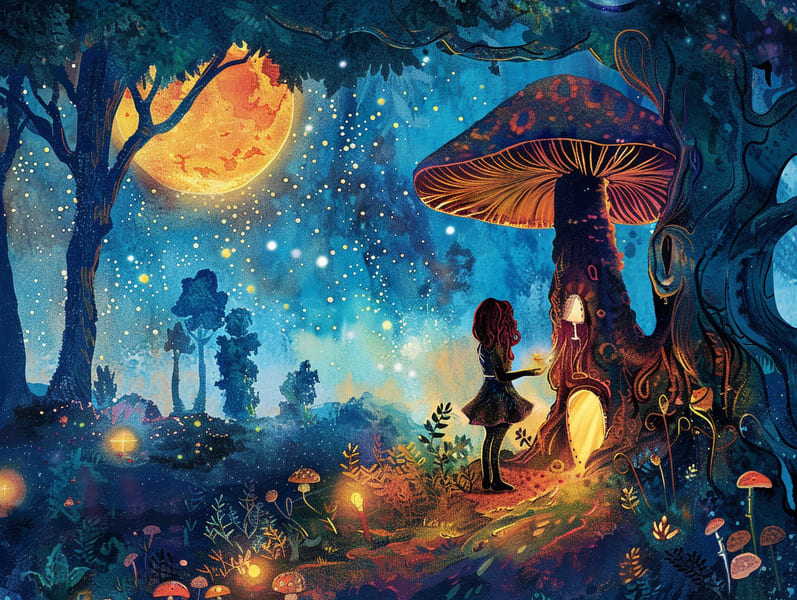The Genesis of Grimm's Fairy Tales and Their Lasting Mystique.
The Genesis of Grimm's Fairy Tales and Their Lasting Mystique.
Blog Article

Short fairy tales have timeless appeal. These narratives have been relayed from one generation to the next well before they were ever recorded. They developed from a variety of backgrounds, including Asian traditions. They were initially told among grown-ups, often carrying themes and messages reflective of the societal norms and beliefs of the time.
Jacob and Wilhelm Grimm, Jacob and Wilhelm Grimm, were among the first to collect many of these beloved stories. Their published works, "Grimm's Fables," included stories like "Cinderella," "Hansel and Grethel," and "Schneewittchen," which have since become staples in the world of traditional fairy tales. Similarly, the Danish author's fanciful fairy tales, such as "The Little Mermaid," and "The Story of the Ugly Duckling," have floated into hearts worldwide, securing their place in the pantheon of timeless fairy tales.
Even though they are old, fairy tales remain as meaningful as ever, especially as bedtime stories for kids. These charming stories are now available in numerous formats, including colorful picture books, magical animations, and digital fairy tales.
Their lasting appeal can be ascribed to several enchanting factors:
Important Morals: Timeless fairy tales often convey important moral lessons. Narratives like "The Tale of the Boy Who Cried Wolf" teach the significance of truthfulness, while "The Tortoise and the Hare" highlight the values of resolve and meekness. These stories offer little ones clear distinctions between moral and immoral, building their moral compass in a soft yet deep way.
Empathy and Awareness: Timeless fairy tales frequently include heroes facing struggles and tests, motivating listeners to identify with their struggles and rally behind their triumphs. For instance, "The Story of Beauty and the Beast" points out the significance of looking beyond appearances to know the inner self of a person, promoting empathy and recognition.
Cultural Recognition: Many classic fairy tales are imbued with the cultural contexts from which they emerged. Learning from these fairy tales can provide enlightening views into different historical contexts, fostering a sense of global insight and understanding.
Fantasy and Imagination: The extraordinary elements in classic fairy tales—supernatural elements—promote children’s innovative ideas. These stories lead readers to supernatural realms, provoking creative thinking and a sense of curiosity that persists a lifetime.
Ancient fairy tales are not only delightful but also educational. They work as fascinating tools in advancing various cognitive and emotional skills in young readers. When traditional fairy tales are told out loud, they promote communication skills by presenting new terms and meanings and sophisticated sentence structures. This practice also improves listening skills and attentiveness, as young ones pay close attention, anxious to see what happens next.
Furthermore, debating the themes and characters of classic fairy tales can strengthen logical thinking and thought processes. Little ones are instructed to discover patterns, anticipate outcomes, and realize cause and effect. These contemplations also advance kids express their thoughts and feelings, enhancing their emotional intelligence.
In today’s online age, the abundance of online fairy tales has made these fairy tales more available than ever. Online platforms and digital apps feature comprehensive collections of old fairy tales that can be seen or listened through anytime, anywhere. Fairy tales read aloud are particularly widespread, making available an fascinating method for young readers to take part in these magical stories. Voice books and read-to-me videos lead characters and settings to life, often paired with entrancing background sounds and background music that amplify the narrative adventure.
The enduring charm of ancient fairy tales lies in their ability to evolve to current eras while continuing with their core values. Contemporary revisions of these tales often include more multicultural protagonists and modern settings, making them meaningful to today’s audience. However, the essential messages of gallantry, warmth, and rightness remain unchanged, continuing to reach kids of all ages.
Timeless fairy tales also offer a sense of protection and knowability. They put out a coherent narrative with a unmistakable beginning, middle, and end, often winding up with the conclusion of conflicts and the triumph of virtue over vice. This assuredness can be solacing for young ones, delivering a sense of security in an always shifting world.
Timeless fairy tales continue to allure and educate new generations, maintaining their fascination and pertinence in modern society. As nighttime stories for kids, they feature a perfect blend of charm and enlightenment, more info advancing moral values, empathy, and creativity. The presence of web-based fairy tales and the sought after status of fairy tales told out loud secure that these ancient stories remain accessible to new generations.
By conserving and making known these narratives, we continue to pay tribute to the rich tapestry of creativity and cultural heritage. Whether you are discovering a vibrantly illustrated book, viewing a web-based library, or hearing an narrated book, the wonder of famous fairy tales is always within reach. These stories teach us of the enduring influence of narratives and its ability to gather us across centuries and lands.
Whether you are accessing a richly illustrated book, perusing a electronic collection, or listening via an read-aloud book, the grace of bedtime fairy tales is always within reach.
These narratives demonstrate of the timeless influence of storytelling and its ability to unite us across eras and regions, establishing a link that enchants and educates alike.